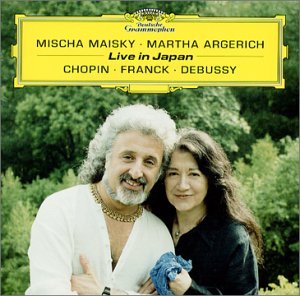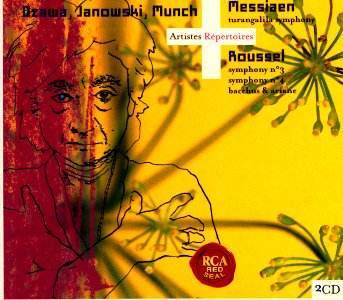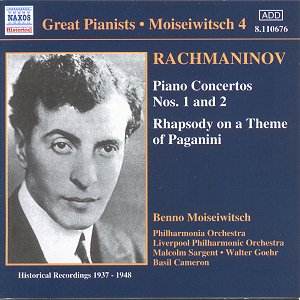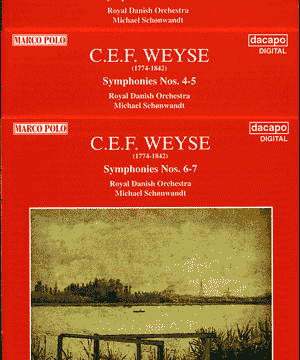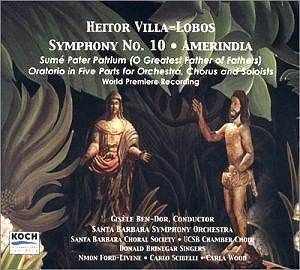 Composer: Heitor Villa-Lobos
Composer: Heitor Villa-Lobos
Works: Symphony No. 10: “Amerindia”
Performers: Carla Wood (mezzo-soprano), Carlo Scibelli (tenor), Nmon Ford-Livene (bass-baritone), Santa Barbara Choral Society, USCB Chamber Choir, Donald Brinegar Singers, Santa Barbara Symphony Orchestra / Gisèle Ben-Dor
Recording: KOCH INTERNATIONAL CLASSICS 3-7488-2
Label: KOCH INTERNATIONAL CLASSICS
Heitor Villa-Lobos stands as a towering figure in 20th-century music, yet his Symphony No. 10, “Amerindia,” remains a complex and often overlooked work within his oeuvre. Composed to commemorate the 400th anniversary of São Paulo, its first performance in Paris in 1957 was marred by a lack of cohesion and understanding, reflective of the cultural dissonance between Villa-Lobos’ Brazilian roots and the European avant-garde of the time. This recent recording by the Santa Barbara Symphony under Gisèle Ben-Dor provides a fresh opportunity to reassess “Amerindia,” highlighting its rich textures and thematic depth.
The performance captures the symphony’s sprawling nature, with particular attention to its unique structure that melds symphonic and choral elements. The opening allegro, titled “The Earth and its Creatures,” sets an expansive tone, though it occasionally feels drawn out, struggling to develop its thematic material fully. This is a common pitfall in Villa-Lobos’ symphonic writing, where the lush orchestration can overshadow the narrative thrust. The ensemble performs with commendable vigor, though one might wish for a more incisive delineation of thematic material, particularly in the central sections where the rhythmic vitality could have been more pronounced.
The second movement, “War Cry,” emerges as a poignant reflection rather than a call to arms, evoking a sense of nostalgia for a simpler, pastoral existence. Ledbetter’s description of this movement as a “lament” rings true, and the performers embody this sentiment with a tender yet restrained delivery. The vocal contributions from mezzo-soprano Carla Wood, tenor Carlo Scibelli, and bass-baritone Nmon Ford-Livene are particularly effective, imbuing the work with emotional weight, even if the choral writing lacks the refinement found in Villa-Lobos’ more polished sacred works. The varied textures of the Santa Barbara Choral Society and the USCB Chamber Choir add a vibrant layer to the orchestral fabric, though the textural clarity occasionally falters in the more densely scored passages.
The symphonic tapestry reaches its zenith in the fourth movement, “De Beata Virgine Dei Mater Maria,” an ambitious suite that juxtaposes the arrival of the Portuguese with the spiritual imagery of Father José de Anchieta’s poem. This movement, both thematically and structurally, serves as the heart of the symphony, yet its dramatic potential feels somewhat underplayed. The climactic “Infernal Dragon” section, while vividly orchestrated, does not deliver the cathartic release one might anticipate, a missed opportunity that leaves the listener yearning for a more pronounced sense of conflict and resolution.
Recording quality plays an essential role in this interpretation, and Koch International Classics has provided a clear and present sound, allowing the individual instrumental lines and choral entries to emerge distinctly. The engineering captures the orchestral textures effectively, though a more intimate acoustic could have enhanced the choral nuances. Comparatively, this recording stands alongside other notable interpretations of Villa-Lobos’ symphonies, such as the ongoing CPO cycle, yet it offers a unique perspective due to its strong vocal components and the lush orchestration characteristic of the composer.
“Amerindia” is ultimately a fascinating exploration of Villa-Lobos’ musical identity, encapsulating the duality of his Brazilian heritage and his European influences. While it may not achieve the consistently high standard of his more celebrated works, this recording serves as a testament to the richness of Villa-Lobos’ symphonic language and the enduring complexity of his vision. The Santa Barbara Symphony under Gisèle Ben-Dor delivers a committed and vibrant account that invites both long-time admirers and new listeners alike to engage with this compelling, if flawed, composition.
